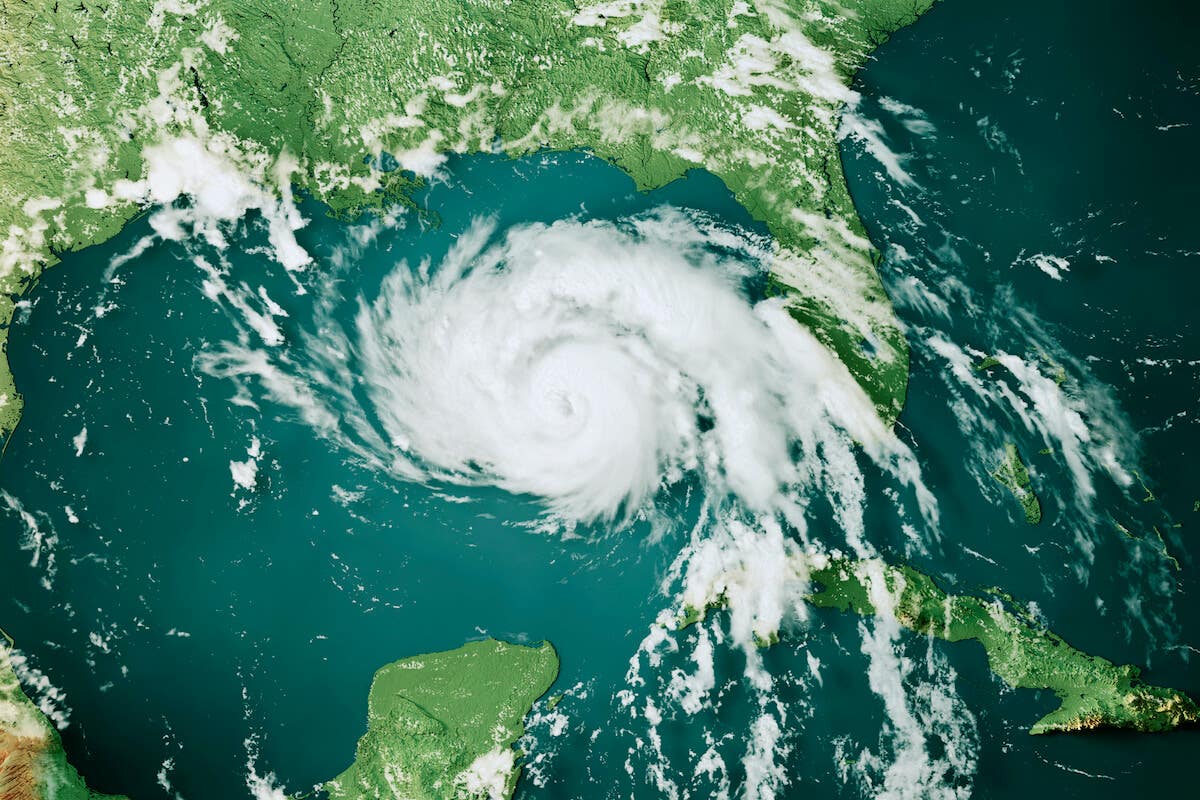Hurricane season is well underway, which means homeowners along the Gulf of Mexico and Atlantic coast are (hopefully!) prepared for the possibility of fierce storms hitting their homes. But it looks like climate change’s impact on hurricanes means people beyond this area may see more named storms.
More people exposed to hurricane risk
According to a study published in Nature Geoscience, tropical cyclones (i.e., hurricanes in the Western hemisphere; and typhoons in the Eastern hemisphere) are moving towards midlatitude regions. The expanding storm zone exposes more people and properties to hurricane risk, including those in high-density cities like Boston and New York.
The basis for the changes is a shift in wind patterns known as Hadley cells that create jet streams. In Hadley cells, warm air at the equator rises, cools as it moves towards a pole, and then sinks as cold air returns to the equator. Unfortunately, warmer temperatures at higher latitudes pull the jet streams towards mid-latitude regions and can potentially bring hurricanes with them.
How does climate change affect hurricanes?
Before we discuss how climate change affects hurricanes, let’s take a quick look at how these powerful storms form. According to the National Ocean Service, hurricanes start when a low-pressure system causes warm, humid air near the ocean’s surface to rise. The air cools as it rises, forming clouds and thunderstorms. At the same time, warm air from the surrounding area takes its place in the low-pressure system. The pattern continues, creating the rotating clouds we see in hurricanes.
Hurricanes require warm ocean temperatures and humid air﹘two conditions common in tropical regions. But climate change has made both more prevalent, and scientists say that may transform how hurricanes act in the following ways:
- Expanding storm zone. As we already noted, hurricanes are finding their way to northern regions more frequently and putting more people in harm’s way.
- Higher wind velocity. Experts anticipate hurricanes will have higher wind velocities as ocean temperatures rise. Essentially, warm ocean water fuels hurricanes, creating stronger winds and more hazardous conditions.
- Increased rainfall. Warmer air can hold more water vapor than cooler air. The result is the potential for wetter storms and an increase in flooding in many communities.
- Slower moving storms. Scientists have yet to figure out why, but hurricanes have slowed by 10 percent. Many believe that warmer temperatures mean there is less difference in pressure between the poles and tropics, slowing down the currents that carry storms.
Long story short? Climate change is increasing the impact of hurricanes on more people than ever before.
Other ways climate change impacts weather
Scientists say that climate change has impacts beyond the frequency and ferocity of hurricanes. With the changing climate comes warmer summers, colder winters, and generally more volatile, less predictable weather. Tornado Alley – long a staple of the American midwest – has actually shifted east in recent years to now include much of the American south.
The ways in which climate change affects homes and homeowners are significant. As climate change rearranges weather patterns, it also alters the risk homeowners – in terms of both the type and severity of damage caused by extreme weather. These impacts are already causing home insurance premiums to go up in areas already feeling the consequences of climate change
Preparing for hurricanes moving forward
When it comes to hurricanes, knowledge is power. You can take steps to prepare for a hurricane by fortifying your home against the possibility. Depending on your situation, that might mean:
- Planning an evacuation route.
- Purchasing hurricane supplies, like a generator, spare gas, and sandbags.
- Installing hurricane shutters and a wind-rated garage door.
- Making a disaster kit.
- Storing valuable and important papers above the ground floor in a waterproof pouch.
You need to be prepared to either shelter in place or evacuate, and you should have a clear plan for either option. Either way, you want to have enough emergency supplies to sustain yourself and your family after a storm hits because it may be days or weeks before emergency help can assist.
Next, increasing hurricane risk means you want to review your homeowners' insurance. Most home insurance policies cover damage caused by hurricane winds, but water damage is another issue. If your hurricane risk has gone up, then you might want to invest in flood insurance.
Finally, take a good hard look at your insurance company. You want to make sure that it has the financial strength to come through on catastrophic claims. Without that, you could have trouble getting back to normal after a hurricane. Check out our response to Hurricane Ida to get an idea of just how seriously we take our claims process.


